Cameroonian Coastal Fishers: The First Savers of Sharks, As Long as They Share the Same Waters
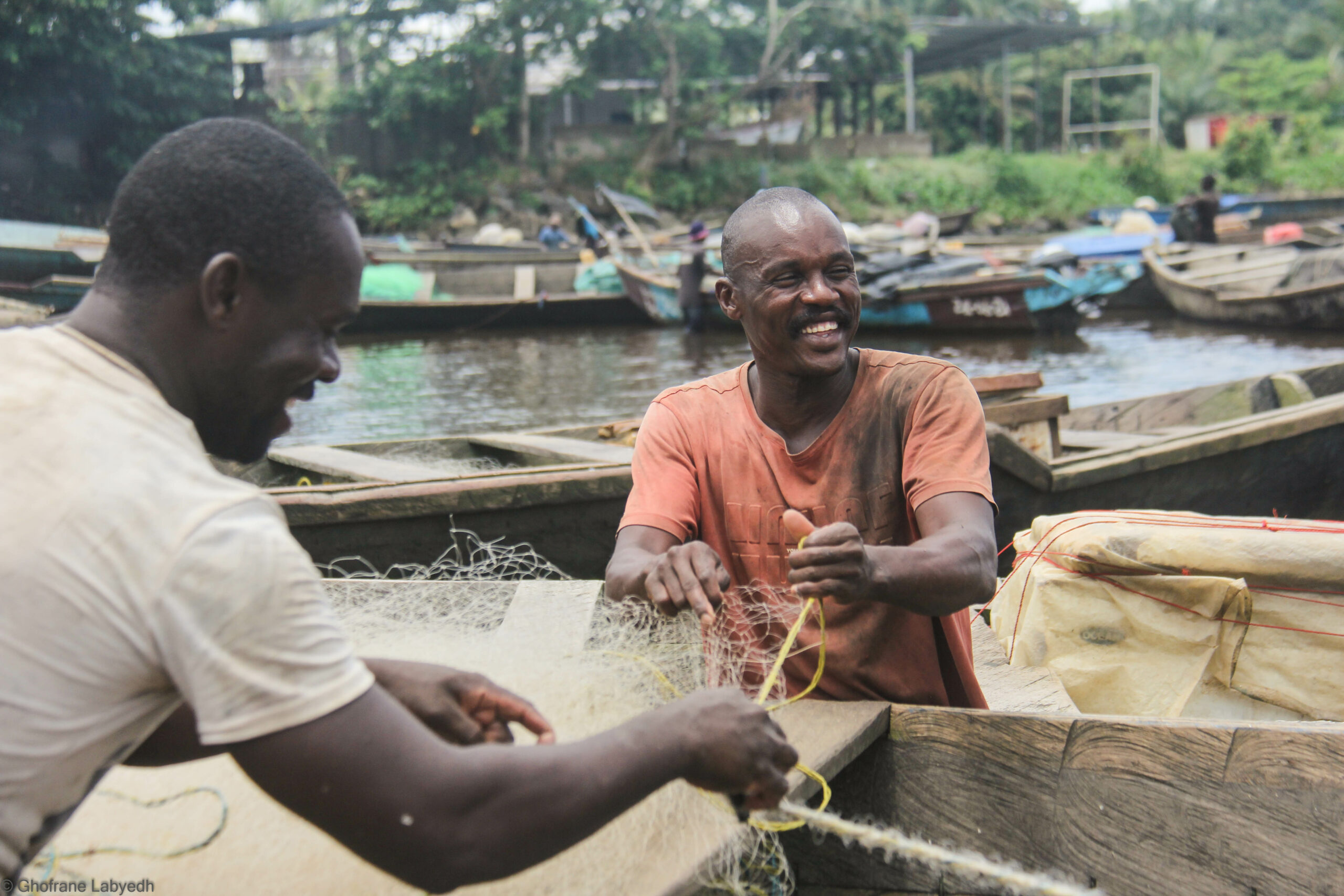
Artisanal fishers setting their nets in Mboa Manga fish market in Kribi Cameroon. Photo © Ghofrane Labyedh | AMMCO
If you ever find yourself on the coastline of Cameroon, one thing that will undoubtedly leave a lasting impression is the resilience of the artisanal fishers. They are strong enough that even the unstoppable rain and high waves can never stop them from fishing. Fishing is not just a livelihood for them; it’s a way of life, deeply intertwined with their culture, economy, and identity. However, as these coastal communities thrive, so do the challenges posed by overfishing and the decline of marine megafauna, particularly sharks and rays.
Since 2015, the African Marine Mammal Conservation Organisation (AMMCO) has been studying sharks and rays (order: Elasmobranchii hereafter referred to as “sharks”) in Cameroon through the Siren app, which allows local fishers to record aquatic species landings. This initiative revealed that sharks make up 99% of the aquatic megafauna in the region. In 2019, AMMCO introduced a more detailed data-gathering protocol to capture biological information, such as size and maturity, which the app couldn’t provide.
The resulting database now includes 45 shark species, 13 of which are critically endangered according to the IUCN Red List. Notably, the scalloped hammerhead (Sphyrna lewini) accounts for 37.5% of landings, while the blackchin guitarfish (Glaucostegus cemiculus) makes up 25.1%, highlighting the urgent need for targeted conservation efforts.
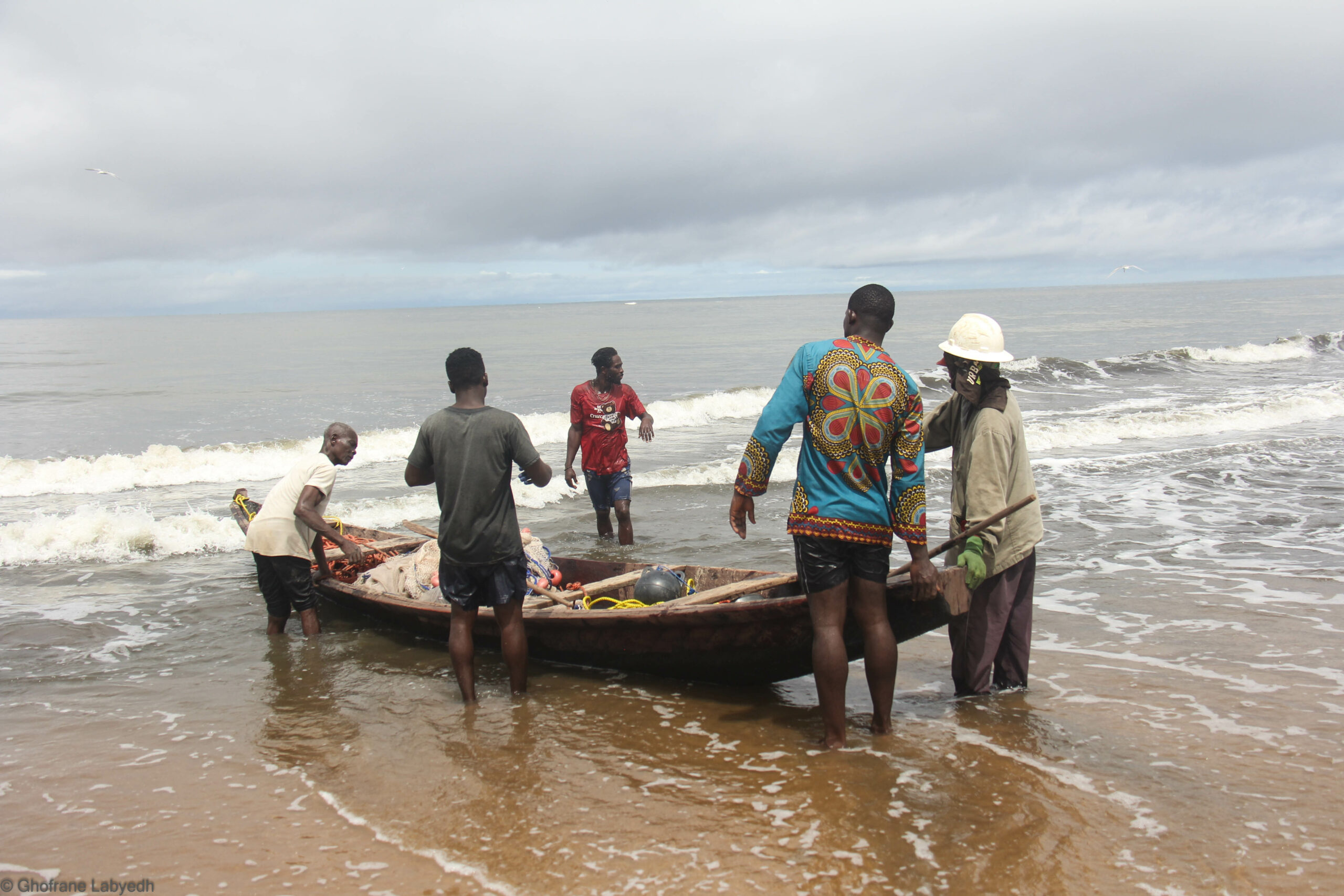
Artisanal fishers preparing their boat for a day of fishing in Londji Village, Kribi Cameroon. Photo © Ghofrane Labyedh | AMMCO
Through these efforts, it became clear that one of the major challenges in protecting sharks in Cameroon’s artisanal fisheries is the lack of specific fishing gear designed to target these species. Instead, fishers use common tools such as drift gillnets, bottom gillnets, longlines, and hooks; gears that inadvertently catch sharks and rays, often in large numbers. Many of these fishing nets have large mesh sizes and are made from cotton, which makes it even harder for these species to escape once caught.
Additionally, many of the fishing grounds used by artisanal fishers overlap with critical nursery areas for sharks and rays. This is especially true in the Kribi-Campo zone, where juvenile sharks dominate the landings. These overlapping areas of fishing and nursery habitats further complicate the challenge of preserving these species in the wild.
This is where the Save our Seas project steps in. Aiming to involve local fishers in the conservation process, the project focuses on science-based engagement to help reduce bycatch, promote sustainable fishing practices, and improve awareness. One of the main components is a live-release program that trains fishers to safely release threatened species like the scalloped hammerhead and blackchin guitarfish back into the ocean. The goal is simple: show the community and government that fishers are part of the solution, not the problem.
By providing fishers with the knowledge and tools to handle these species safely, the project hopes to foster a sense of stewardship within the community. The long-term vision is to create a sustainable conservation model that benefits both the marine environment and the fishing communities.
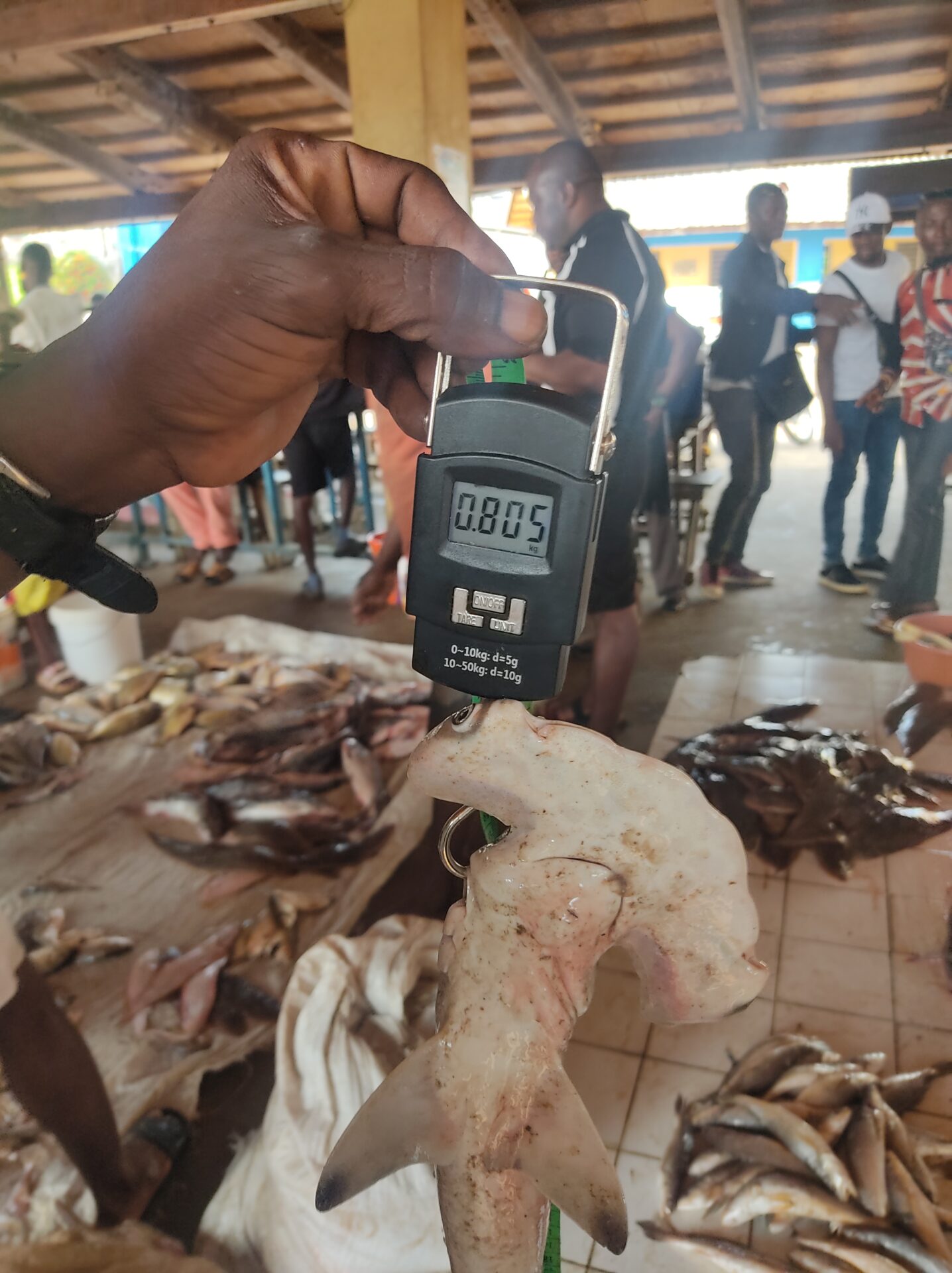
Taking weight measurements of a scalloped hammerhead shark (Sphyrna lewini) specimen as part of our fish market survey in Mboa Manga fish market, Kribi, Cameroon. Photo © Ghofrane Labyedh | AMMCO
The fight to protect sharks and rays in Cameroon is still in its early stages, but it is a fight that has the potential to change the future of these species. Through community-based conservation efforts, scientific data collection, and international collaboration, we are beginning to shine a light on the invisible struggle facing these ocean giants. But much more work remains.
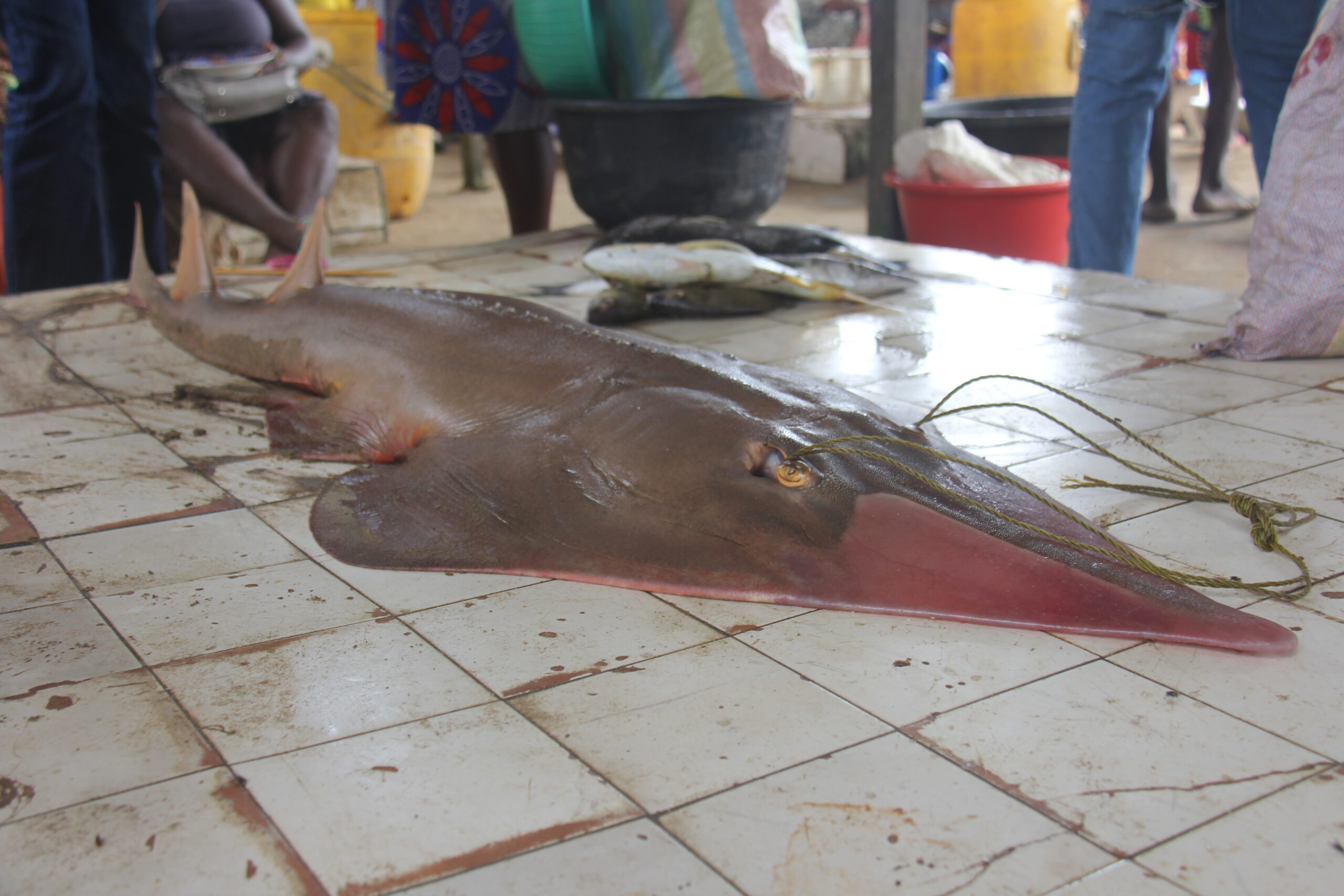
A landed blackchin guitarfish (Glaucostegus cemiculus) in Londji Village, Kribi Cameroon. Photo © Ghofrane Labyedh | AMMCO
To ensure a future for sharks and rays in Cameroon, we need to empower local communities, enforce sustainable fishing practices, and create a regulatory framework that prioritizes the protection of these species. The solution lies not only in protecting the sharks themselves but also in supporting the communities that depend on the ocean for their livelihoods. The key to preserving our oceans lies in the hands of those who know them best.
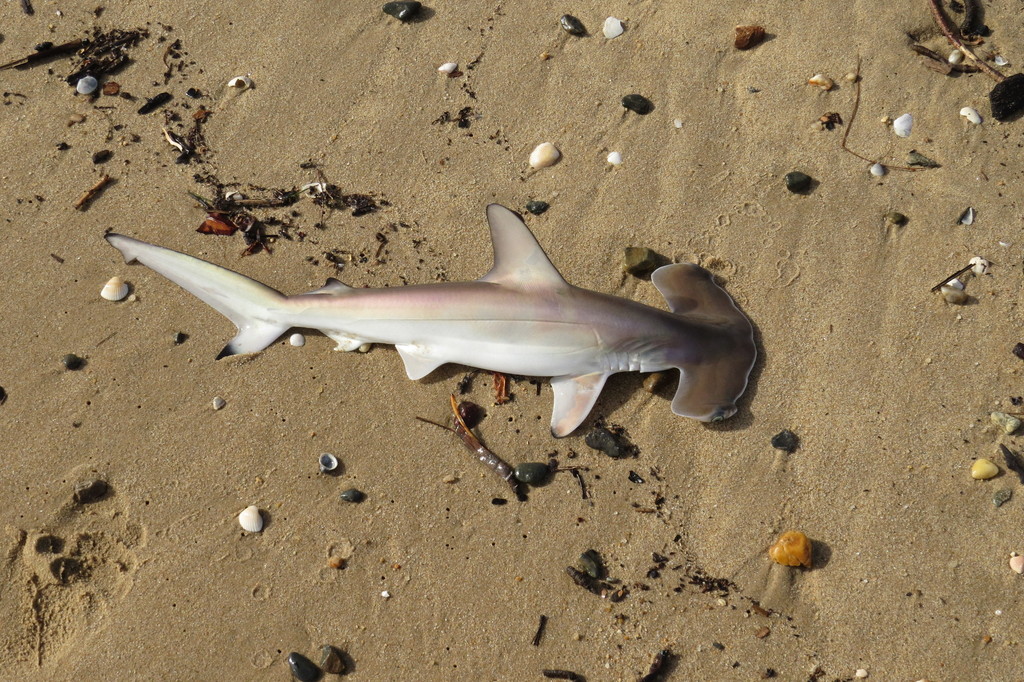
A landed scalloped hammerhead shark (Sphyrna lewini) in Londji Village, Kribi Cameroon. Photo © Ghofrane Labyedh | AMMCO
